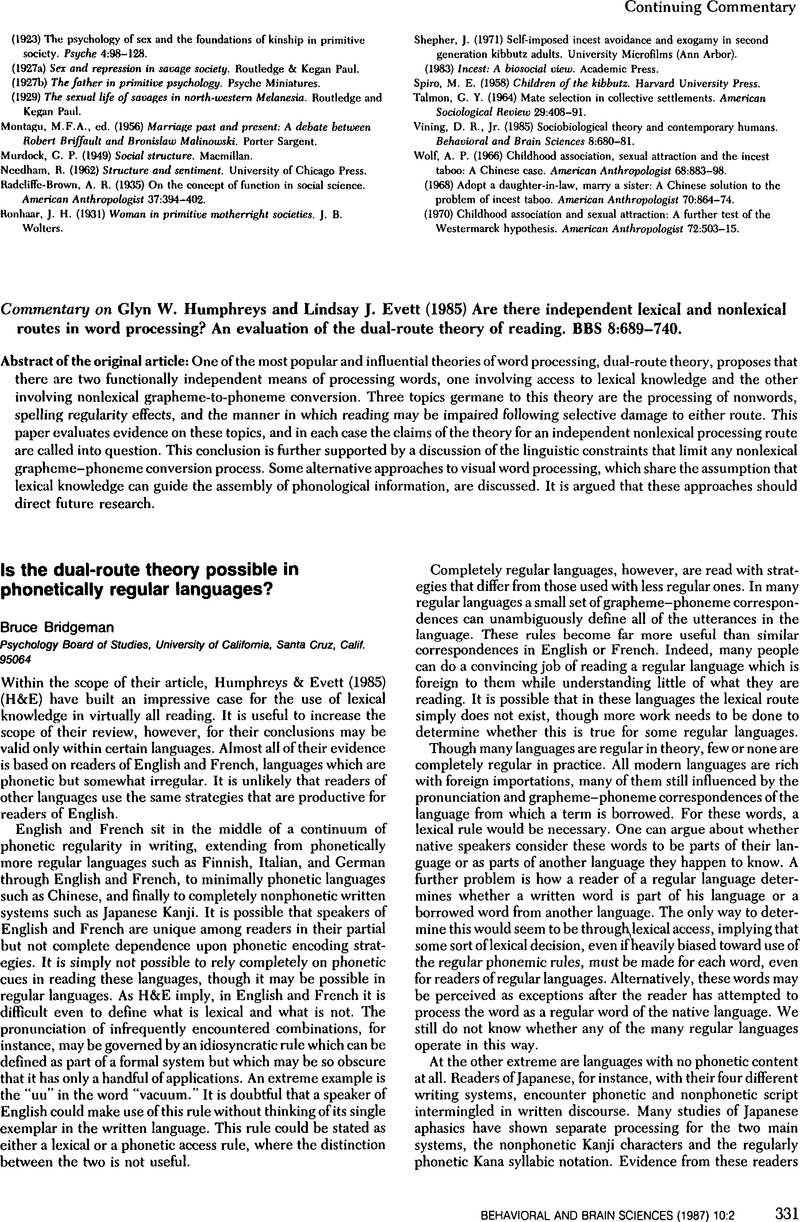Patterson, K. E. &
Morton, J. (
1985) From orthography to phonology: An attempt at an old interpretation. In:
Surface dyslexia: Neuropsychological and cognitive studies of phonological reading, ed.
Patterson, K. E.,
Marshall, J. C. &
Coltheart, M..
Erlbaum. [GDAB]
Google Scholar 